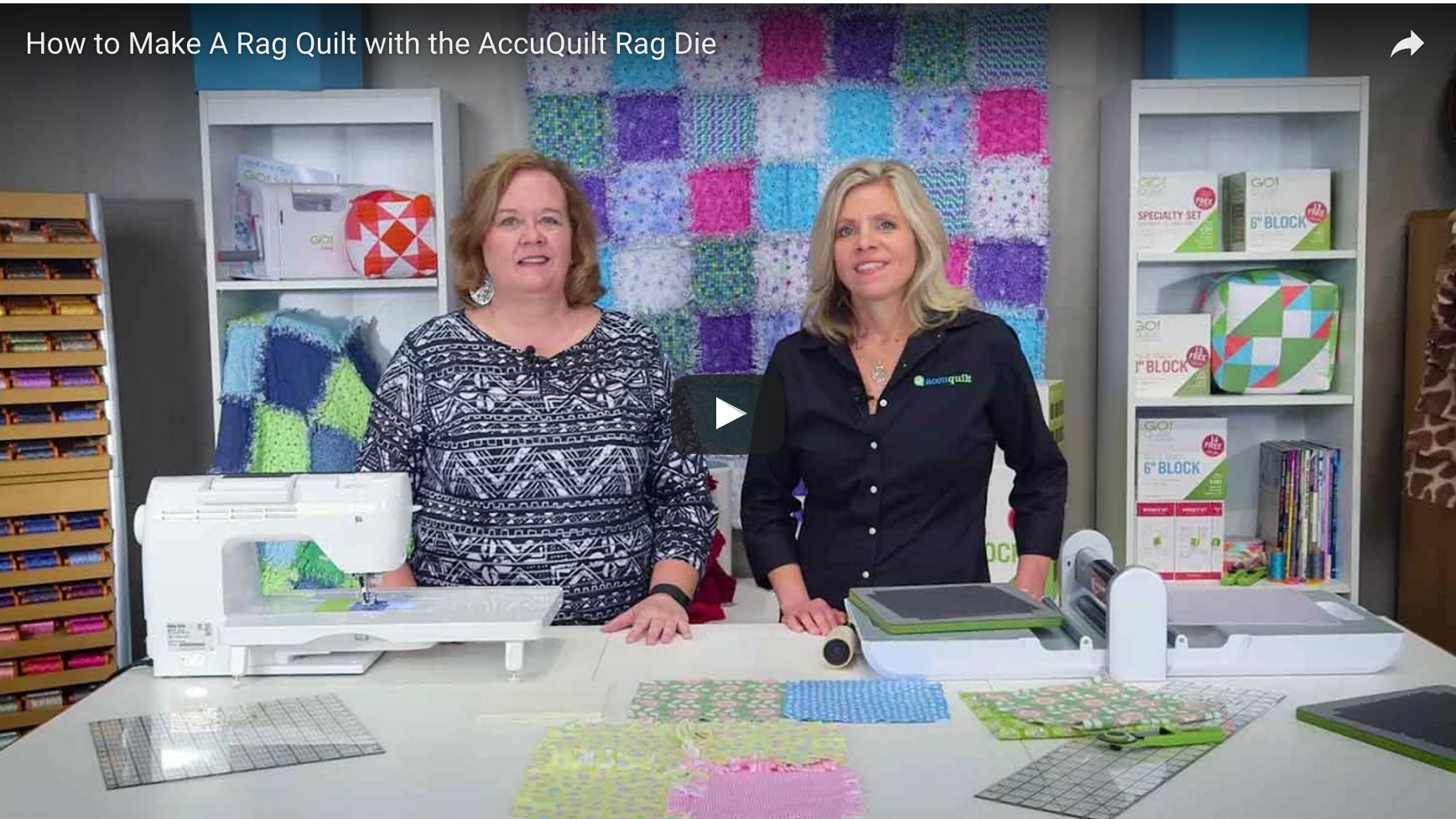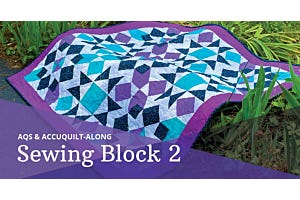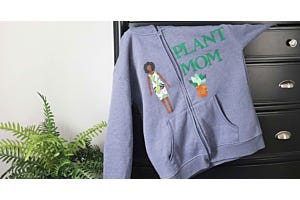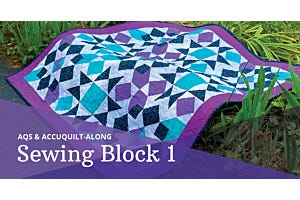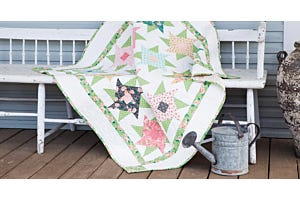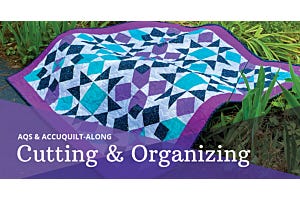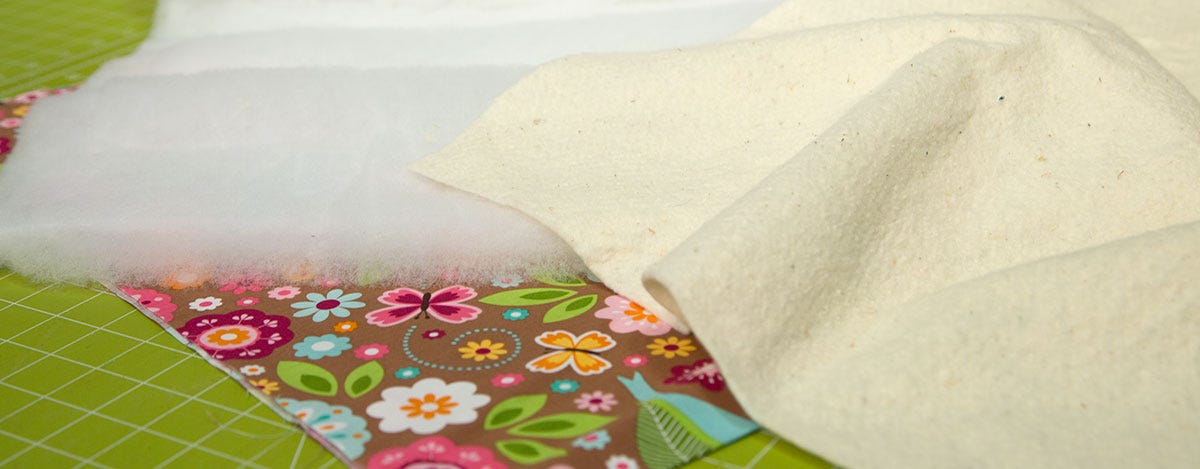
Quilt Batting: Your Questions Answered
It seems that we all have questions about which quilt batting should be used in our quilt projects. Many have favorites that they have used for years. However, the makers of quilt batting and the types of quilt batting to buy has exploded. The elements discussed in this blog on quilt batting can help you ask the right questions to choose the best product for any given project.
It is wise to understand how you want your project to be used and ask questions accordingly to determine the best batt for your quilting project. The topics in this blog are organized to reflect the likely order of your needs: Project purpose; project construction and use; quilt batting materials; quilt batting properties; and quilt batting makers links. Read all the way through to connect your goals with the best product.
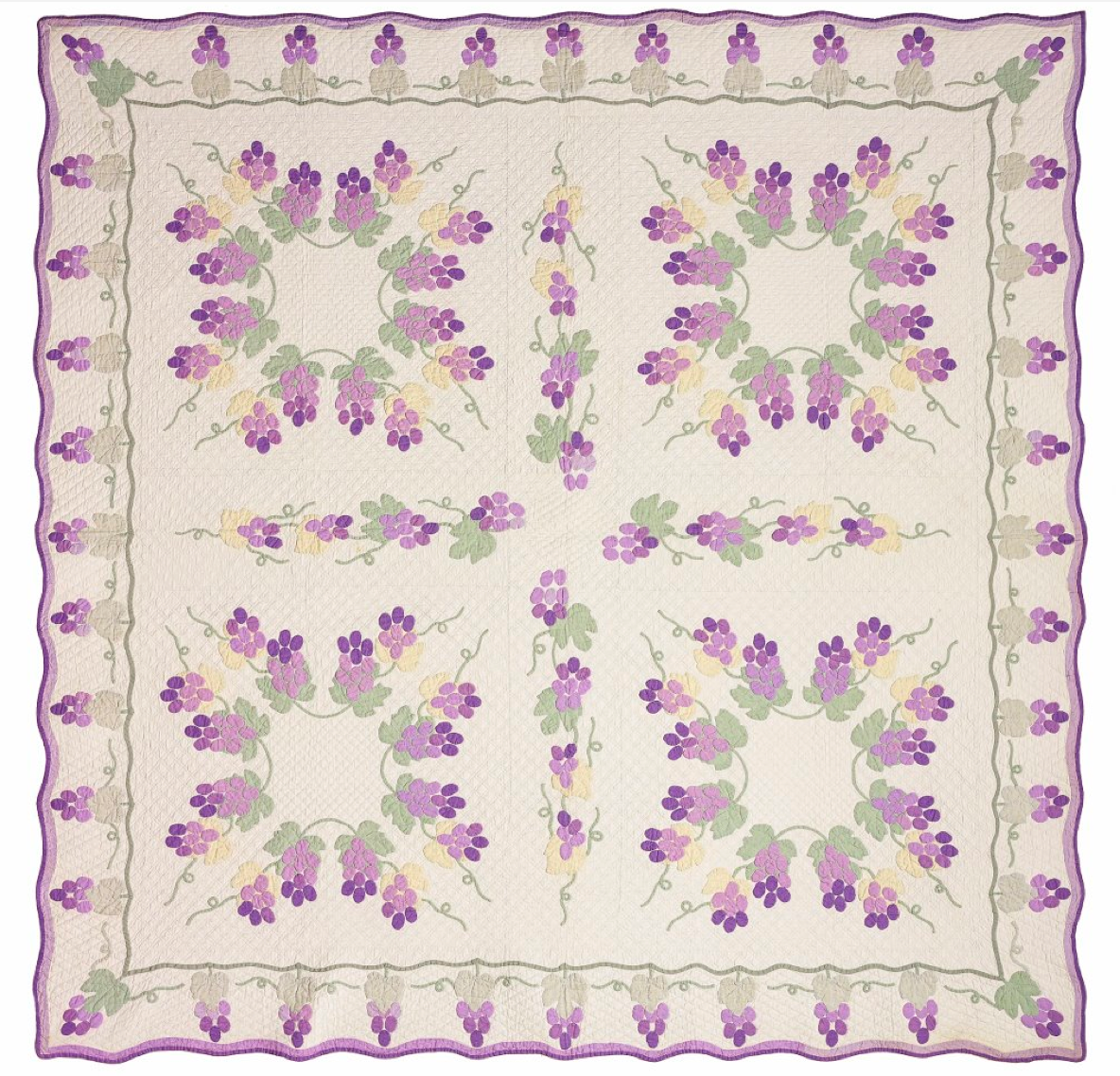
Grapes and Vines (1914) from Marie Webster. Hand-quilted, thin batt. Owned by the Indianapolis Museum of Art, Webster Collection. Photo courtesy of Stephanie Perry.
Quilt Project Purpose
How the quilt will be used is the primary reason for choosing a specific batt. Quilts have been used to protect soldiers underneath their armor and to provide warm bed coverings in cold climates from babies to adults.
Over time, added to these uses have been wearable clothing meant to be seen and wall decorations. Lighter use purposes such as bed and table runners, tote bags, potholders and placemats have become popular.
These diverse uses for quilts have helped drive and differentiate batt types.
Planned Purpose
- Competition -- Two different batts, layered, provide desired levels of loft plus structure plus resilience. Needs structure to hang straight. May or may not be washed.
- Decorative -- Needs structure to hang straight. Will not be washed.
- Heavy duty -- Baby, bed, throws, home dec such as placemats. Needs durability. Observe laundry handling requirements.
- Specialty tops such as Redwork -- Use a very thin batt behind embroidery, then a second batt behind top.
- Wearable -- Needs durability, drape. Check laundry handling.
Desired look/effect/text
Achieving a desired look for a quilt is a multiple step process. Apart from the fabric(s), color(s) and design of the piecing or applique of the top, the batt plays a big part in two ways: How the three-layer sandwich is quilted; and how the materials are treated, specifically, quilting design density and whether or not the batt is washed before construction or after the quilt is completed. Check what they say to do, as they vary for the same type of batt (due to the processes/finishes used). Common looks include:
- Flat/Modern (Preferred batt examples: Some blends, thin cotton, low loft polyester, silk.)
- Puffy/Trapunto (Preferred batt examples: Some blends, high loft polyester, wool.)
- Vintage/Antique (Preferred batt examples: Unwashed cotton, unwashed wool.)
Construction and Use
Apart from the end use, making the quilt is the major factor in choosing a batt. Struggling to sew through the wrong batt is just as disappointing as a bad finish.
For example, hand quilters especially need to make note of the scrim they will needle through to reduce muscle fatigue and adhesive drag on the needle, although these are also issues for machine quilters.
Terms used here are explained in the following sections.
- Ease of sewing/stitching/needling -- Hand or machine quilting, or tying.
- Fusible or not -- Eliminates the need to thread or pin or spray baste if fusible. Some fusibles wash out; others do not. Some fusibles are better for machine quilting, not hand, but some accommodate both.
- Manipulation -- For example, is splitting or stuffing of the batt possible, or will bearding result.
- Minimum stitch distance -- How far apart the quilting stitches are affects several factors including warmth (larger unquilted areas trap more warmth), puffiness, piecing emphasis, bearding, and durability. Based on the characteristics of their fiber construction and processing, they recommend many minimum stitch distances, from 1/8 inch apart to 8 or more inches apart.
- Pre cut to project size, cut off the bolt or in rolls -- Remove package folds by machine drying with a damp cloth for 5 – 10 minutes. Some batts are available on rolls sized to meet long arm or bulk quilting needs. Some times batts must be pieced to achieve the right size for a quilt; how easy will this be?
- Pre wash or not -- Some say to not pre washing any batts, or only hand soaking them and air drying. Read what they say on the package, because suggestions for the same type of batt vary from one maker to another. Very thin batts and most 100% cottons and all silk and wool batts should not be pre washed; they will be damaged. Pre washing some batts preserves their loft, while for some batts, washing after the quilt is made gives an antique look because of shrinkage.
- Washing -- Wearable quilts and those intended for bed use should be able to withstand at least hand washing or soaking. Baby quilts and some items such as placemats need durability through many washings. Read their directions.
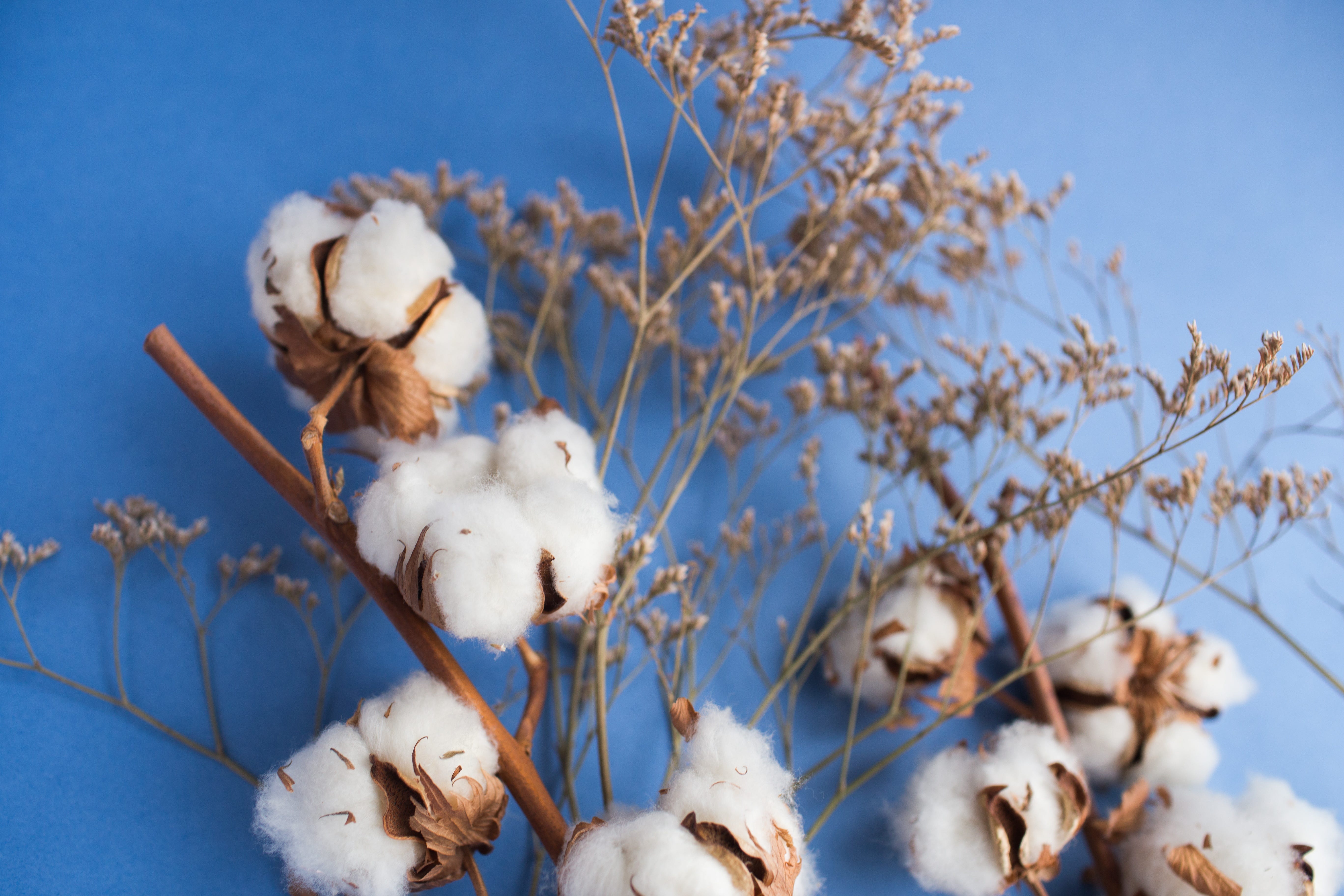
Quilt Batting Materials
The middle of the three layers of the textile sandwich we call a quilt goes by the name batt or batting (also called filling or wadding, primarily in the UK). Batts are made of natural or synthetic fibers or a blend of some of these.
Natural fibers come in varying lengths and deniers (fiber size), and different finishes and processes, such as needle-punched, with scrim or bleached or unbeached. (Scrim is a lightweight woven cotton or flax textile used to “coat” the batt to prevent quilt batting fibers from migrating away from the batt and through other textiles, such as a quilts top or backing.)
Some materials are organically produced and processed; note that “natural” does not mean “organic.” Any natural fiber can be blended with other fibers. Natural fibers are renewable; some are more ecologically sustainable than other.
Synthetic fibers are made from non-renewable sources. They provide qualities not found in all-natural batts such as loft and structure and are frequently used in blends.
Natural fibers
- Bamboo -- Natural anti microbial properties. Blended with cotton or polyester. Shrinkage certain, less so when blended with polyester. Very gentle laundering.
- Cotton -- Naturally breathable fiber. Great structure and durability. Washable. If not pre washed, can
- shrink for antique look. Older batts may contain cottonseed oil or seeds.
- Corn -- Blended by some manufacturers into other fibers for softness.
- Silk -- Soft, beautiful drape. Washable on gentle cycles. Shrinks up to 5%.
- Soy -- Fibers blended with other types for a softer, more sustainable/renewable batt.
- Wool -- Naturally breathable fiber. Warm but not overly so. Has some loft like polyester. Machine washable on gentle cycles and dryable.
Synthetic fibers
- Blends -- Combine the best qualities of two fibers. Blends can be pre washed or not. If not, slight shrinkage will give an antique look.
- Microfiber -- Mimics natural fibers, used in blends. “What defines a microfiber is its size — a microfiber must be smaller than one denier.” Shawn Strouse, director of sales, Tuway American Group, Troy, Michigan.
- Polyester -- Extremely durable through heavy laundering, soft, warm, easy to needle.
Quilt Batting Properties
The wide variety of batts on the market reflects the innumerable ways quilters wish this middle layer of the quilt sandwich to behave. Do not presume, for example, that all cotton batts or cotton blends are alike.
Read the package, talk to the retailer, ask other quilters, go to the makers web site, visit the quilt batting vendors at quilt shows. Many quilt batting makers offer samples of their wares.
- Bearding/Fiber migration -- Do not over dry the quilt when laundering. Use high quality fabrics, not bargain bin, to prevent bearding lint from appearing on the quilt top or back. Use high quality cotton or polyester thread to prevent bearding to the back on cotton batts. Scrim/needle-punching helps reduce bearding/fiber migration, but if it is too heavy, it makes the batt difficult to needle.
- Color -- Bleached batts are good for white background fabrics. Dark batts are good for shadow trapunto as well as dark background fabrics. Natural or ecru batts are good for everything else.
- Drape - Clothing and bed quilts need drape. Wall hangings need structure, not drape.
- Finish -- Scrim/needle punched or bonded. These finishes prevent bearding and fiber migration, add structure.
- Flame retardant -- Baby quilts, crib bumpers, crafts such as potholders. Read package or contact manufacturer if there are toxicity concerns.
- Insulated -- Potholders, placemats, table runners, clothing.
- Loft -- The height or puffiness of unquilted areas relative to heavily quilted areas.
- Resilience -- Whether the batt stays creased after folding or springs back to shape.
- Shrinkage -- Contributes to antique or vintage look after first washing of completed quilt.
- Structure -- How well the batt holds the project’s shape. Factors include type of fiber, whether and how the batt surface is secured (scrim, bonding, needle-punch), if it’s fusible (adhesive adds to structure).
- Sustainability -- Eco-friendly. May apply to the fibers used, finishes, and/or making processes.
- Warmth -- Breathability; some batts stay cooler than others.
- Weight -- Depends on fiber content; refers to being lightweight or heavier weight relative to warmth or season. Measured in ounces per product or yard.
Quilt Batting Makers: Links; What They Offer in Their Own Words (as of October 2016)
This list covers some of the major quilt batting makers. You may well come across others, especially if you live outside the US, travel overseas or attend shows. Descriptions in blue are from the web site shown. Many of them welcome questions; consumer needs and tastes drive their research and processes.
Bosal -- http://www.bosalonline.com/batting
"Since 1954, Bosal Foam & Fiber has produced high-quality American made foam, fiber, craft and interfacing products for both the whole sale and retail trades. The firm produced the nationally famous Holland Blankets, which were supplied Union troops during the Civil War. Today, Bosal Foam and Fiber boasts a craft, hobby, sewing and quilting line second to none."
Hobbs -- http://www.hobbsbatting.com/products/
"Hobbs makes the most complete line of quilt batting, pillow inserts and fiberfill in the industry. Quilters may find your favorite Hobbs products at a local quilt shop, craft store or fabric retailer. Ask for Hobbs Tuscany, Heirloom, Poly-Down and Thermore by name. If your near by retail store does not stock what you are looking for, they will be able to place an order for you."
Fairfield – https://www.fairfieldworld.com/store/?fwp_category=batting
"Fairfield offers a broad assortment of quilt batting in pre cut quilt sizes, bulk rolls and bolts. Choose from renewable cotton, bamboo, and wool, along with many different polyester styles in low, medium, or high loft thicknesses. Some also feature a fusible coating, such as Fusi-Boo and Smooth."
FiberCo -- http://www.fiberco.com/
"FiberCo has firmly marked its place as the leading manufacture of quilt batting and waddings, we are committed to finding the best and cleanest fibers for our products. All of the great products we produce are available at discount wholesale quilt batting prices even batting made from the Eco Friendly Bamboo and Soy fibers."
June Tailor -- http://store.junetailor.com/store/c-9-fusible-batting.aspx
"Save hours of time basting your quilt with this innovative line of Quilter’s Fusible Batting products. Baste all three quilt layers together with just the heat and steam of an iron - no fussing with pins, hand basting or layers shifting as you stitch. These exclusive, patented, fusible quilt batting products have a consistent application of fusible web that may be left in quilts for extra body or dissolved in cold water for a softer touch."
Mountain Mist -- http://www.quiltbattingwarehouse.com/page/mountaimmist
"The Textile & Fiber Products Division of Leggett & Platt, Inc., is the North American leader in the processing of Engineered Textile and Polyester Staple Fibers... Our Mountain Mist® and Buffalo Snow lines of Craft and Seasonal Decorations are distributed through retailers nation wide."
Organic Cotton Plus -- http://organiccottonplus.com/collections/batting-backing
"From finding ways to weave and knit new organic fabrics, to sourcing notions like buttons and colorful ribbons, crafting projects are what drive us every day. With low prices, maintaining a huge (and growing!) selection, and making sure we have the best certification and eco-credentials in the industry, we could not be more happy coming to work each day knowing that our customers are making the world a cleaner place with each purchase."
Pellon - http://www.pellonprojects.com/products-categories/batting/
"We offer a wide range of quilt batting with materials from Cotton, Wool, Bamboo, and Polyester. Pellon® is known as an industry leader and has quickly become the go-to quilt batting for both beginner and advanced quilters and sewers."
Quilters Dream -- http://quiltersdreambatting.com/
"You have just taken the first step towards a Dreamier quilting experience. Quilters Dream Batting uses the finest fibers and state of the art manufacturing to bring you quilt batting of high quality. We use the softest silkiest high quality fibers so that your quilt will resist shrinkage and stay soft yet strong and wonderfully drapeable. Each batt is hand cut and carefully inspected. Quilters Dream Batting proudly presents premium quality quilt batting that will provide warmth, drape, volume, definition and support to your quilt through generations. Made with pride in the USA."
The Bamboo Fabric Store -- http://www.bamboofabricstore.com/index.php?main_page=index&cPath=13
"Natural and anti bacterial insides for your [bamboo] quilts, pillows and costumes. Feel good about all your crafts."
The Warm Company -- https://warmcompany.com/
"Since 1980, The Warm Co has been making exciting and innovative products that make sewing, quilting and crafting through out the world, easier and more enjoyable. You can always count on the Warm Company to offer products that inspire creativity in your quilting, crafting, sewing and home decorating projects. All brand name products are made with only the best materials available to ensure your finished projects meet your high standards."
Specialty Batts
There are several batts from these and other makers, made to respond to our creative needs. If you can’t find a batt for your project, speak up. The entire quilting industry is highly responsive; quilt batting makers especially so.
Some examples are fusible products; materials that do or don’t wash away, depending on your preference; quilted insulation; and microwaveable material.
By Andi Reynolds
After near five years as the executive book editor for the American Quilter’s Society, Andi Reynolds retired and has resumed the free lance life. She spends her time writing, quilting, cooking, and obeying the commands of her large dogs Lucky and Mousse. Her husband Dennis is the beloved co-leader of the pack. They live in Paducah, KY.
You Can Cut Your Batting with the GO! Cutters!
Did you know that in addition to cutting up to six layers of cotton fabrics with your GO! cutters, you can also cut batting? Watch this video that shows how to make a Rag Quilt and how easy it is to finish a Rag Quilt with the Rag Die and Square Die.


